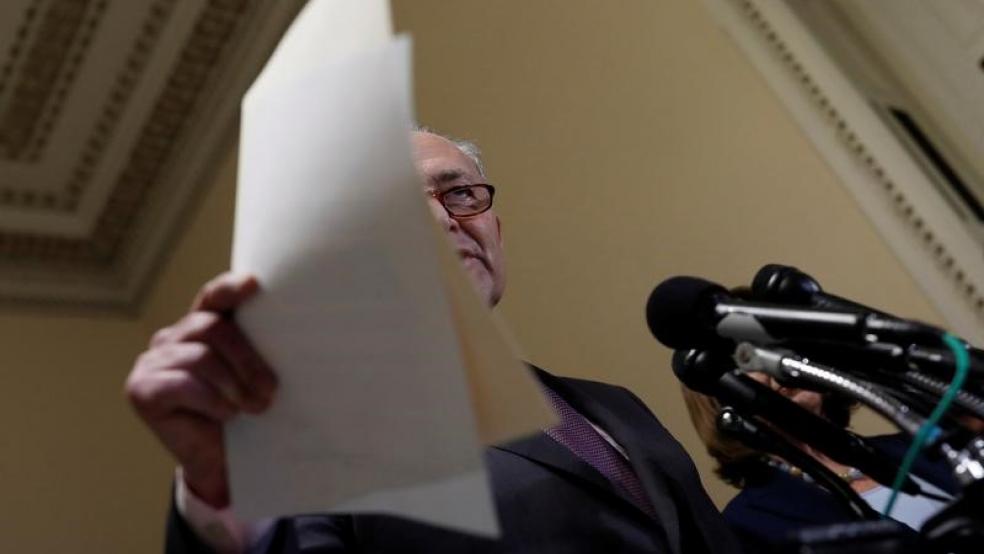President-elect Donald Trump and the leaders of the Republican-controlled Congress continue to say they will repeal the Affordable Care Act and unveil a replacement proposal at the same time. However, there is considerable concern among health care economists and other experts about the lack of a fully-articulated Republican plan.
Trump and the Republicans have promised a plan that will not only cover as many Americans as the ACA, but will provide even better care at lower costs, while providing wider choice. However, all of the plans put forward so far have been outlines at best, in which hand-waving about the power of market forces does virtually all of the heavy economic lifting.
Related: 5 Key Pieces of a ‘TrumpCare’ Plan that Could Affect Your Health
This has led many to worry that the Republicans, feeling pressure to follow through on the vow to repeal Obamacare immediately, will move forward with legislation to gut the law before a replacement plan has been put in place.
Whether or not that will actually happen is anybody’s guess. Perhaps Trump was telling the truth when he told The Washington Post over the weekend that he has a secret plan in the works that is almost ready for public release.
But if there is no plan, or if Congress repeals the ACA and then finds itself unable to craft a new one from the mishmash of proposals currently on the table, the consequences would be enormous for the millions of Americans currently covered by either ACA’s Medicaid expansion or by the non-group policies sold on the state health care exchanges.
The nonpartisan Congressional Budget Office and the Joint Committee on Taxation on Tuesday released an estimate of the effect of implementing H.R. 3762, the Restoring Americans’ Healthcare Freedom Reconciliation Act of 2015. That’s the bill that President Obama vetoed last year, and while it isn’t being reconsidered by the new Congress, it contains many elements that virtually any repeal bill put forward would also share. Those include repeal of the ACA’s individual and employer mandates and elimination of its Medicaid expansion. H.R. 3762 also kept in place many of the insurance market reforms contained in the ACA, including a ban on refusing coverage due to pre-existing conditions and on pricing according to health status.
Related: Rand Paul’s Obamacare Substitute: Take Two Aspirin and Call Me in the Morning
If the bill were passed, according to CBO and JCT, “The number of people who are uninsured would increase by 18 million in the first new plan year following enactment of the bill. Later, after the elimination of the ACA’s expansion of Medicaid eligibility and of subsidies for insurance purchased through the ACA marketplaces, that number would increase to 27 million, and then to 32 million in 2026.”
And those who remained in the exchanges -- mostly older, sicker people -- would face steep premium increases.
“Premiums in the nongroup market (for individual policies purchased through the marketplaces or directly from insurers) would increase by 20 percent to 25 percent—relative to projections under current law—in the first new plan year following enactment,” the report finds. “The increase would reach about 50 percent in the year following the elimination of the Medicaid expansion and the marketplace subsidies, and premiums would about double by 2026.”
Perhaps most troubling of all is that premium increases aside, the elimination of the mandates would drive so many insurers out of the health care exchanges that by 2026, three out of four Americans would be living in an area in which no insurer offered nongroup policies through them.
“Prior experience in states that implemented similar nongroup market reforms without a mandate penalty or subsidies has demonstrated the potential for market destabilization,” the study notes. “Several states that enacted such market reforms later repealed or substantially modified those reforms in response to increased premiums and insurers’ departure from the market.”
Related: Trump Says His Plan Would Provide ‘Insurance for Everybody’
And for many Americans, that change would be almost immediate: “[A]bout half of the nation’s population lives in areas that would have no insurer participating in the nongroup market in the first year after the repeal of the marketplace subsidies took effect, and that share would continue to increase, extending to about three-quarters of the population by 2026.”
To be clear, this scenario is not an inescapable result of ACA repeal. Congress and the president could produce an alternate proposal that would eliminate the impact of reform, or at least lessen it. However, without a clear articulation of that plan in advance, it’s natural for people who are the most vulnerable to a disrupted healthcare market to worry about a future in which Obamacare goes away, and no real replacement is ever put in place.





